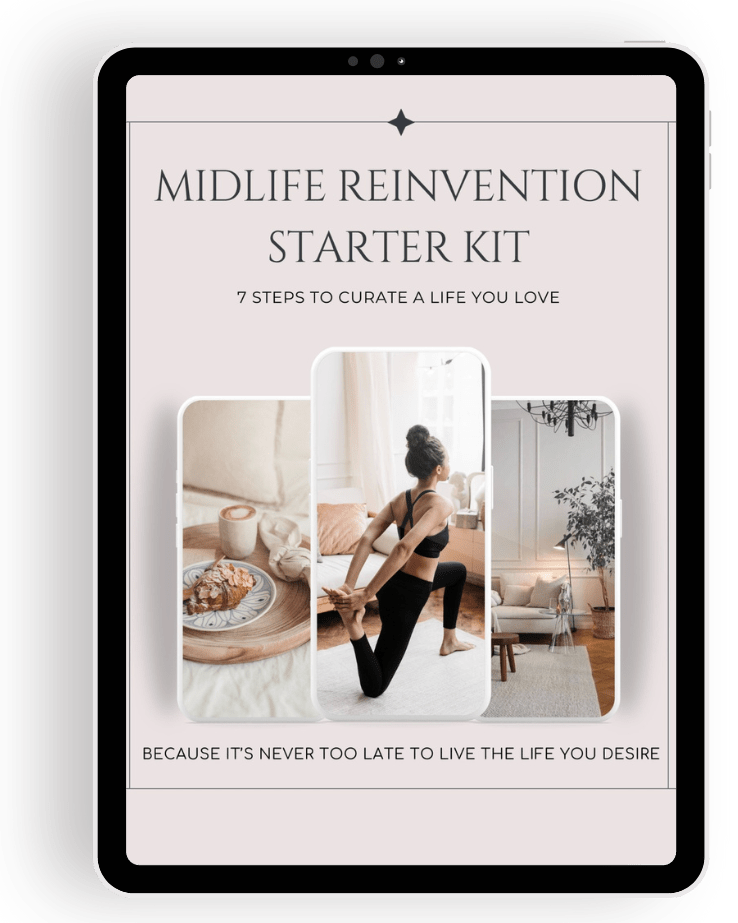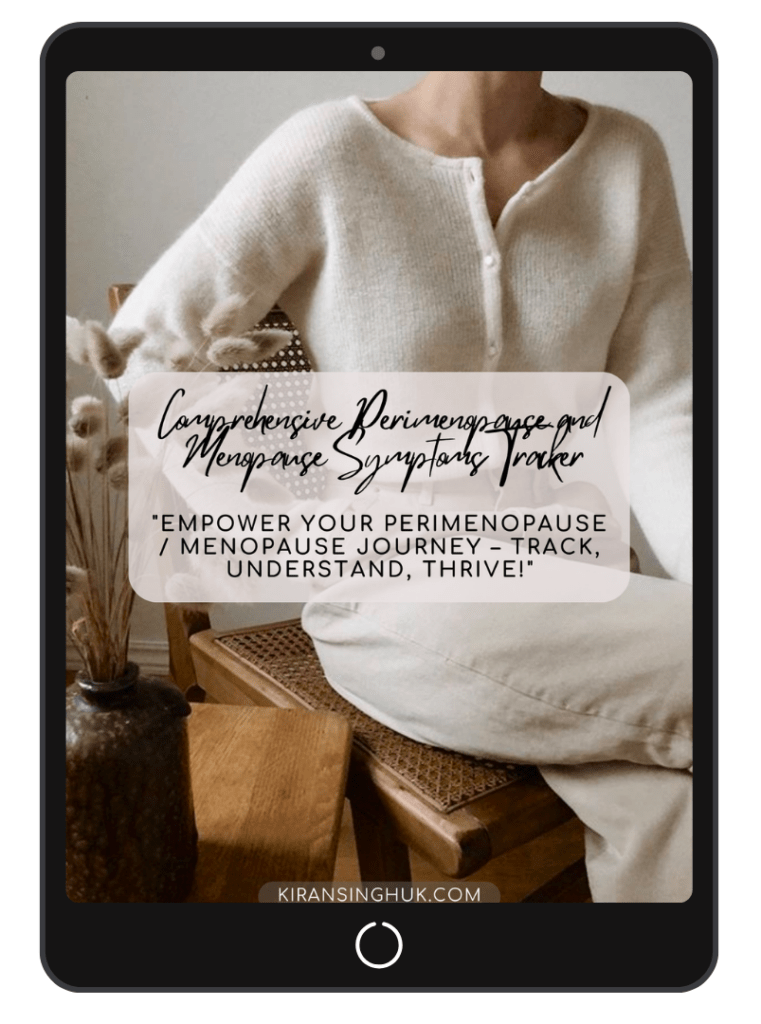Menopause is a major life transition that brings many physiological changes, and one of the most overlooked yet critical aspects is how it affects blood sugar regulation. If you’ve been experiencing unexplained fatigue, sudden energy crashes, cravings, weight gain, or increased anxiety, your blood sugar levels could play a significant role.
As someone who is pre-diabetic and currently navigating the Diabetes Prevention Programme, I’ve had to make important lifestyle changes to support my health. This journey has deepened my understanding of the intricate relationship between menopause and blood sugar, and I want to share what I’ve learned – both from personal experience and the latest research – to help you regain control of your well-being.

How Menopause Affects Blood Sugar
1. Oestrogen & Insulin Resistance
Oestrogen plays a key role in insulin sensitivity, meaning it helps your body use glucose efficiently for energy. As oestrogen levels decline during perimenopause and menopause, your cells can become more resistant to insulin, leading to higher blood sugar levels. This is one reason why many women in midlife gain weight more easily, especially around the abdomen, and struggle to lose it.
2. Progesterone, Cortisol & Blood Sugar Spikes
Progesterone, another key hormone, influences blood sugar regulation by impacting how your body responds to insulin. During perimenopause, progesterone levels fluctuate wildly before eventually declining. These fluctuations can cause more pronounced blood sugar highs and lows, making you feel jittery one moment and exhausted the next.
Additionally, menopause triggers an increase in cortisol (the stress hormone), which can further spike blood sugar levels. Chronic stress, disrupted sleep, and anxiety – all common during menopause – make blood sugar even harder to manage.
3. Weight Gain & Increased Diabetes Risk
Due to lower oestrogen levels and increased insulin resistance, women in menopause often experience metabolic changes that make it easier to store fat, particularly around the abdomen. Studies show that postmenopausal women have a four-fold higher risk of developing type 2 diabetes than premenopausal women.
My Personal Journey with Pre-Diabetes & the Diabetes Prevention Programme
I never expected to hear the words “You are pre-diabetic” during a routine check-up, but it was a wake-up call. My blood tests showed that my fasting blood sugar levels were higher than normal.
Being a vegan & vegetarian nutritionist, eating homecooked meals three times a day, going for daily walks, and hitting the gym 3-5 times a week, I thought I was doing everything ‘right’. So when my blood sugar levels came back high, I was completely baffled. After diving into research, I discovered that perimenopause could be the culprit. Hoping for clarity, I reached out to my GP, but my concerns were brushed aside. Unwilling to settle for that response, I decided to seek a second opinion through a private GP via my life insurance – now, I’m just waiting to hear back.
In the meantime, I’ve been making intentional changes:
- ✅ Prioritising protein at every meal to avoid blood sugar crashes
- ✅ Reducing processed carbs and focusing on slow-releasing, fibre-rich foods
- ✅ Strength training & Pilates to improve insulin sensitivity
- ✅ Daily movement, including walking after meals to regulate blood sugar
- ✅ Mindful eating, avoiding emotional snacking
- ✅ Managing stress through deep breathing & meditation
These small but significant changes are making a huge difference in my energy and mood.
Now, I’m actively working to optimise my cholesterol levels through lifestyle changes and expert guidance. I eat home-cooked meals daily, go for 1-2 hour long walks daily, do strength training at the gym 3-5 times a week, and maintain an overall healthy lifestyle.
How to Balance Blood Sugar During Perimenopause & Menopause
1. Prioritise Protein & Healthy Fats
Every meal should include a high-quality protein source (fish, eggs, tofu, chicken, lentils) and healthy fats (avocado, olive oil, nuts). Protein and fats help slow the absorption of glucose, keeping blood sugar stable.
2. Reduce Processed Carbohydrates
Refined carbs (white bread, pastries, sugary cereals) cause rapid blood sugar spikes followed by crashes. Instead, choose slow-releasing carbohydrates like quinoa, sweet potatoes, whole grains, and legumes.
3. Eat Fibre-Rich Foods
Fibre slows down sugar absorption, preventing sudden spikes. Aim for 25-30g of fibre daily from vegetables, whole grains, nuts, and seeds.
4. Avoid Sugary Drinks & Hidden Sugars
Many so-called “healthy” foods contain hidden sugars. Swap sugary drinks for water or herbal tea, and check labels for added sugars in yoghurts, sauces, and snacks.
5. Move After Meals
A simple 10-15 minute walk after eating can help regulate blood sugar and improve insulin sensitivity. Strength training, Pilates, and resistance exercises are also great for improving glucose metabolism.
6. Manage Stress & Improve Sleep
Stress and poor sleep trigger cortisol surges, leading to blood sugar imbalances. Prioritise:
- 🛌 Quality sleep (aim for 7-9 hours)
- 🧘♀️ Stress reduction (meditation, deep breathing, journaling)
- 🚶♀️ Movement (yoga, Pilates, nature walks)
7. Stay Hydrated
Dehydration can raise blood sugar levels. Aim for at least 2 litres of water daily and avoid sugary drinks.
8. Consider Supplementation
Certain supplements can help stabilise blood sugar:
- Magnesium (improves insulin function)
- Chromium (supports glucose metabolism)
- Berberine (shown to lower blood sugar levels)
- Cinnamon (may help with insulin sensitivity)

Journaling Prompts to Reflect on Your Blood Sugar & Menopause Journey
- 📖 What are my biggest struggles with energy and cravings?
- 📖 How do I feel after eating different types of meals?
- 📖 What are three small changes I can make this week to support my blood sugar?
- 📖 How do stress and sleep impact my energy levels?
- 📖 What is my relationship with food, and how can I make it more mindful?
Frequently Asked Questions (FAQs)
Q: How do I know if my blood sugar is imbalanced?
If you frequently feel tired, sluggish, moody, or experience strong sugar cravings, it could be a sign of unstable blood sugar. Testing your fasting glucose and HbA1c levels can provide more clarity.
Q: Can menopause increase my risk of diabetes?
Yes. The decline in oestrogen and progesterone makes women more insulin-resistant, increasing the risk of type 2 diabetes.
Q: Do I need to eliminate carbs completely?
No! Healthy carbs like vegetables, whole grains, and legumes are essential. The key is to balance them with protein and fats to avoid blood sugar spikes.
Q: Does intermittent fasting help with blood sugar?
For some women, intermittent fasting can help with insulin sensitivity. However, it’s important to listen to your body – fasting can be stressful for some and worsen hormonal imbalances.
Actionable Steps to Take Today
- ✅ Evaluate your current diet – Where can you swap refined carbs for whole foods?
- ✅ Plan balanced meals – Focus on protein, fibre, and healthy fats at every meal.
- ✅ Track how you feel – Keep a food & energy journal to notice patterns.
- ✅ Move after meals – A short walk can improve glucose metabolism.
- ✅ Prioritise sleep & stress management – Hormones & blood sugar thrive with good sleep & relaxation.
Take Charge of Your Health
Understanding the link between blood sugar and menopause can be life-changing. With the right nutrition, movement, and lifestyle adjustments, you can stabilise your energy, reduce cravings, prevent weight gain, and lower your diabetes risk.
💬 I’d love to hear about your experience! Have you noticed blood sugar changes during menopause? What strategies work for you? Share your thoughts in the comments or reach out for support. Let’s navigate this journey together. ❤️

Feel free to sign up to my Friday Morning Love Note HERE! This isn’t just a newsletter - it’s your invitation to pause, reflect, and realign with you. Every week, we’ll journey together to uncover the small, meaningful shifts that will help you design a life that feels uniquely and beautifully yours. Each week, I’ll deliver fresh intentions, uplifting tips, and simple shifts to inspire purposeful, creative living.










